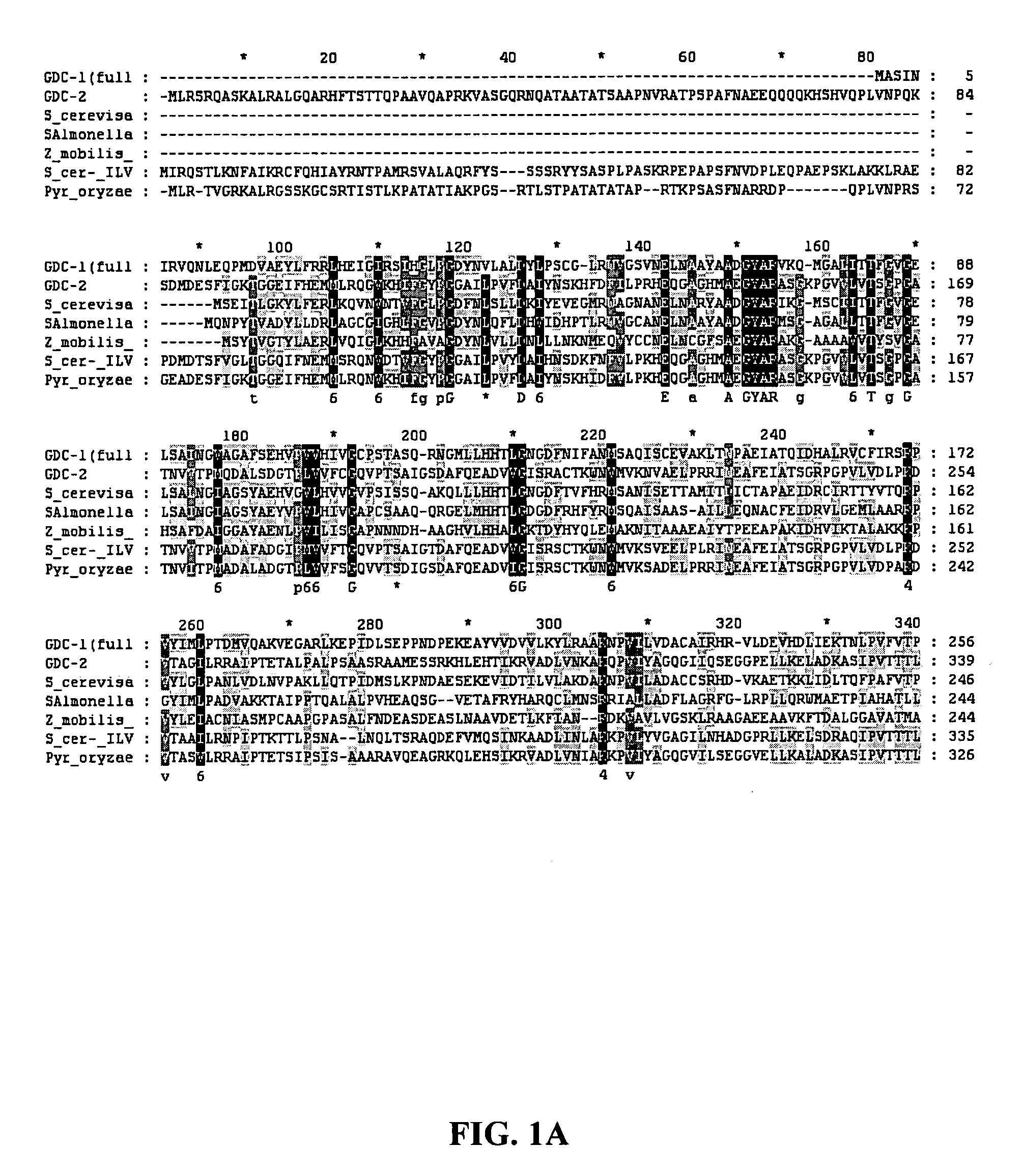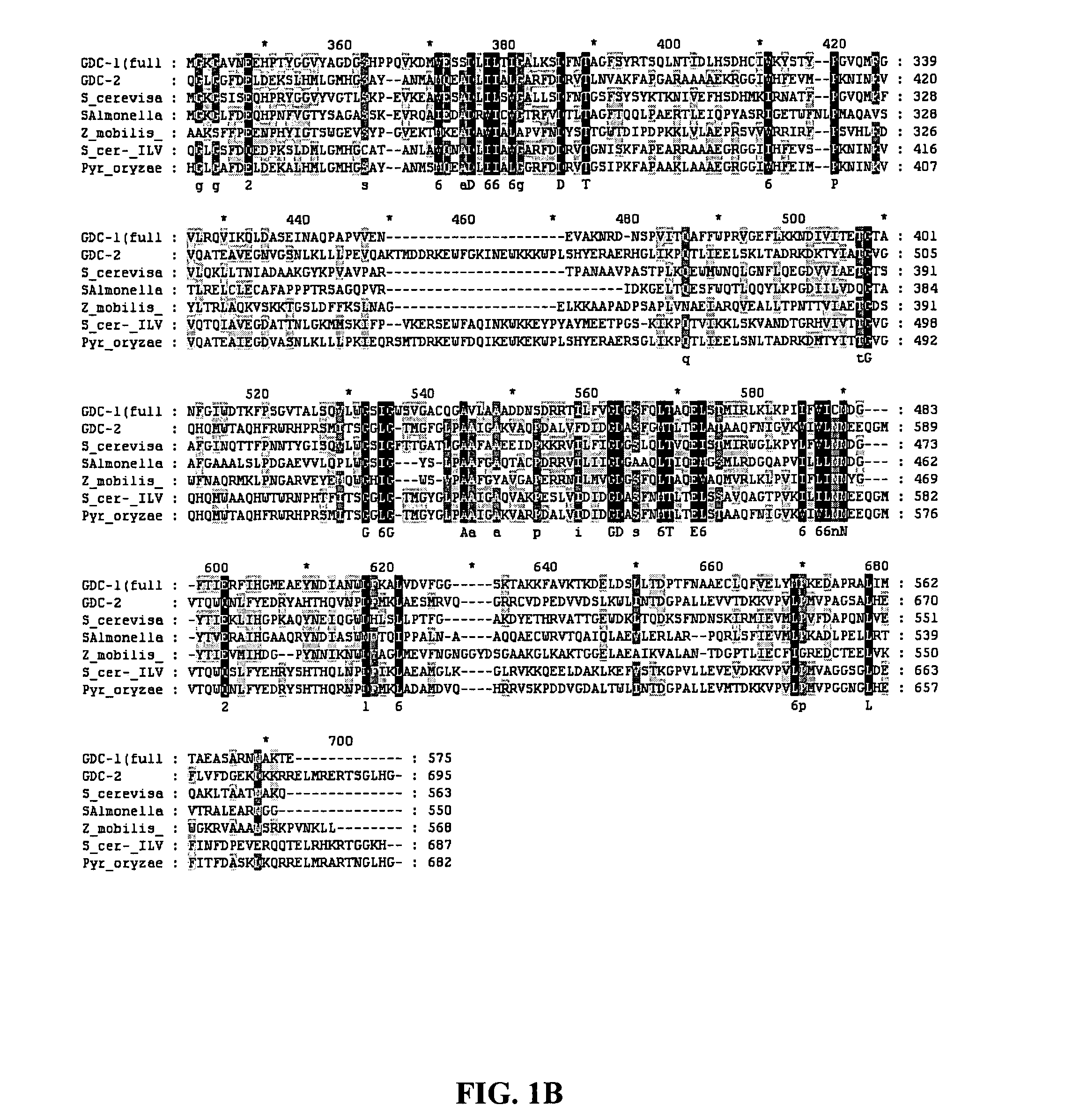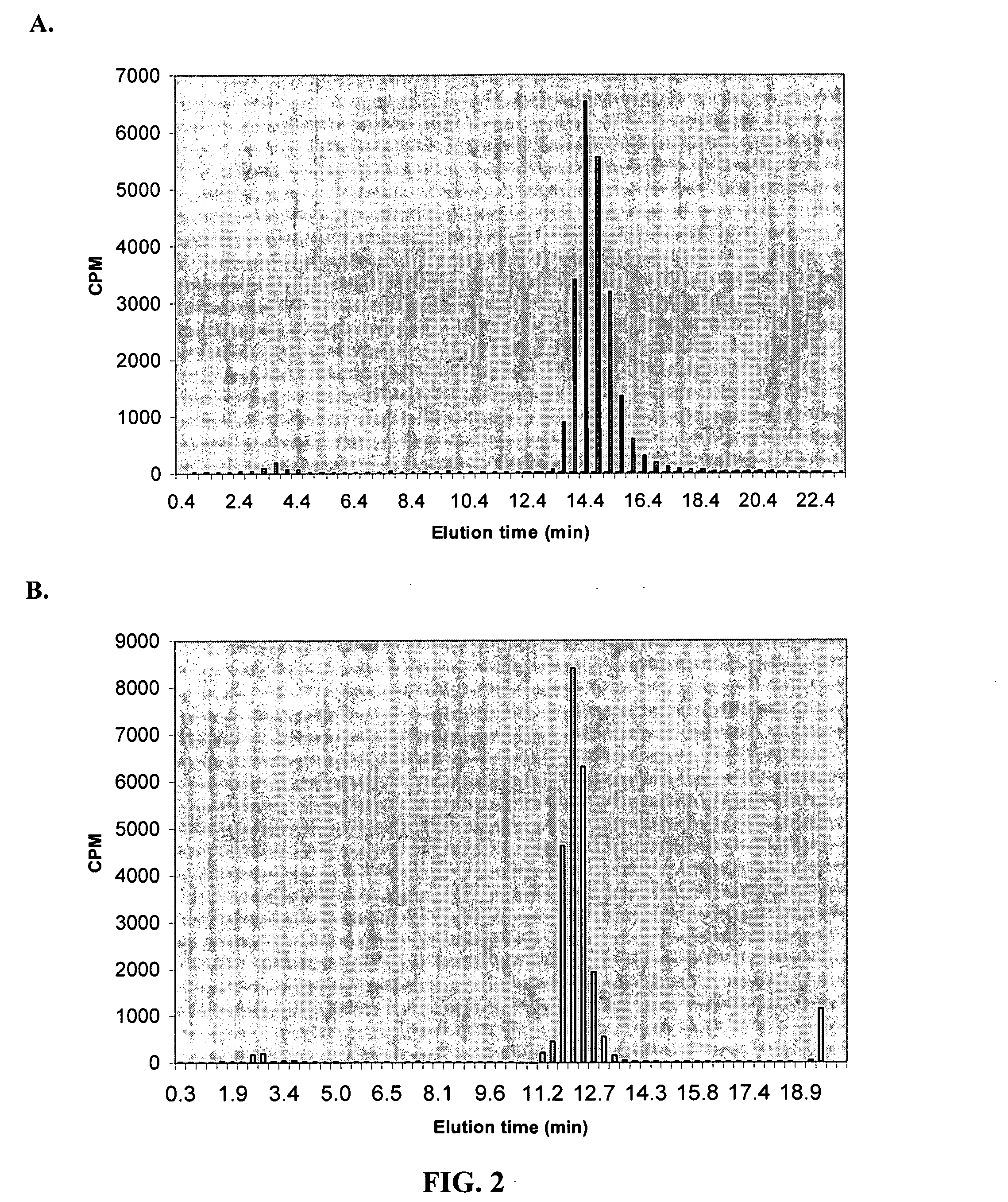Methods to confer herbicide resistance
a technology of herbicide resistance and cell, applied in the field of methods to confer herbicide resistance to cells, can solve the problems of not only killing plant cells, but also toxic to bacterial cells, toxic to these bacteria, etc., and achieve the effect of increasing the tolerance of cells
- Summary
- Abstract
- Description
- Claims
- Application Information
AI Technical Summary
Benefits of technology
Problems solved by technology
Method used
Image
Examples
example 1
GDC-1 and GDC-2 Confer Glyphosate Resistance Upon Cells
[0094] Starter cultures of E. coli containing GDC-1 (full), GDC-2, or vector alone were grown overnight in LB media, diluted 1:1000 into 3 ml M9 minimal media containing 0, 2, 5, 10, 20 and 30 mM glyphosate and grown at 37° C. Each strain was grown in triplicate at each concentration. OD600 was measured at 0, 7, 24, and 28 hours after inoculation. Table 2 shows the OD600 obtained for each construct at 28 hours after inoculation.
TABLE 2Growth of clones in glyphosateGlyphosateVectorGDC-1GDC-2concentrationMeanS.DMeanS.D.MeanS.D.00.0520.0010.0490.0060.0500.00120.0380.0010.0560.0000.0540.00150.0380.0010.0550.0010.0560.001100.0380.0000.0570.0010.0560.001200.0380.0000.0580.0010.0580.001
example 2
GDC-1 and GDC-2 are Both TPP-Binding Decarboxylases
[0095] Searches of DNA and protein sequence databases, as well as sequence analysis of the GDC-1 and GDC-2 proteins show that they are homologous to pyruvate decarboxylase and acetolactate synthases. See, respectively, co-pending U.S. Application Publication No. 20060021093, entitled “GDC-1 Genes Conferring Herbicide Resistance”, and co-pending U.S. Application entitled “GDC-2 Genes Conferring Herbicide Resistance”, both filed Jul. 20, 2005 and are herein incorporated by reference in their entirety. These searches reveal that both both GDC-1 and GDC-2 contain amino acid regions which are conserved among TPP-binding proteins, including pyruvate decarboxylases and acetolactate synthases. An alignment of GDC-1 and GDC-2 with other known TPP-binding proteins is shown in FIG. 1.
example 3
Engineering GDC-1 and GDC-2 for Expression in E. coli
[0096]E. coli strains expressing GDC-1 and GDC-2 were engineered into a customized expression vector, pAX481. pAX481 contains the pBR322 origin of replication, a chloramphenicol acetyl transferase gene (for selection and maintenance of the plasmid), the lacI gene, the Ptac promoter and the rrnB transcriptional terminator. The GDC-1 and GDC-2 open reading frames were amplified by PCR, using a high fidelity DNA polymerase, as known in the art. The oligonucleotides for PCR amplification of GDC-1 and GDC-2 were designed to place the ATG start site of the genes at the proper distance from the ribosome binding site of pAX481.
[0097] The GDC-1 PCR products were cloned into the expression vector pAX481 and transformed into E. coli XL1 Blue MRF′ to yield the plasmid pAX472. The GDC-2 PCR product was cloned into the expression vector pAX481 and transformed into E. coli XL1 Blue MRF′ to yield the plasmid pAX473. Postive clones were identifi...
PUM
| Property | Measurement | Unit |
|---|---|---|
| temperature | aaaaa | aaaaa |
| temperature | aaaaa | aaaaa |
| pH | aaaaa | aaaaa |
Abstract
Description
Claims
Application Information
 Login to View More
Login to View More - R&D
- Intellectual Property
- Life Sciences
- Materials
- Tech Scout
- Unparalleled Data Quality
- Higher Quality Content
- 60% Fewer Hallucinations
Browse by: Latest US Patents, China's latest patents, Technical Efficacy Thesaurus, Application Domain, Technology Topic, Popular Technical Reports.
© 2025 PatSnap. All rights reserved.Legal|Privacy policy|Modern Slavery Act Transparency Statement|Sitemap|About US| Contact US: help@patsnap.com



